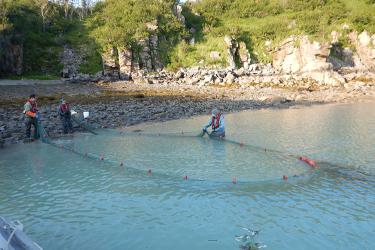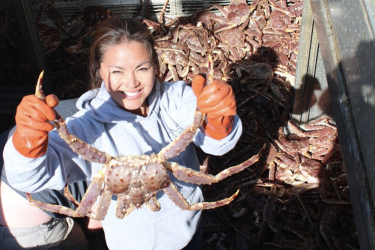Indigenous communities, scientists, and government officials play a crucial role in contributing to a unique perspective in natural resource management. Their collective knowledge base, when brought together, offers hope and the potential for significant positive change in the wise and sustainable use of natural resources. Murphy et al. 2022 highlighted the differences between fisheries management agencies and resource stakeholders, encouraging several guidelines, such as two-way communication. This could involve regular meetings where both parties share their insights and concerns or using digital platforms to facilitate ongoing dialogue. This emphasis on communication is a key factor in successful scientific collaboration and natural resource management. Other recommendations included co-management, cooperative fisheries research, citizen science, peer-reviewed social science publications, and the co-production of knowledge.
In a previous blog, I discussed communities and voices and the importance of bridging worldviews. This concept refers to the crucial need to understand and respect each other's perspectives and knowledge systems when collaborating on natural resource science and management. This understanding and respect are not just the foundation; they are the essence of a successful and inclusive voice that is heard and valued.
Let's dive into the world of salmon in Alaska, a place where some species are declining while others show healthy returns. This blog will mainly focus on this intriguing balance and the efforts to manage these natural resources. As a visual aid, I recommend the Pacific Salmon Life History video, which elaborates, “the choices we make today affect salmon and all the species [including human communities and cultures] that depend on them.” This video provides a comprehensive understanding of Pacific salmon's life cycle, the interconnectedness of species, and the environment they depend on, underscoring the urgency of our role in natural resource management.
As previously noted, Murphy et al. 2020 encouraged a two-way communication approach. As described by the Arctic Yukon-Kuskokwim Working Group (AYK WG), this method is a 'two-eye seeing' framework. In this framework, different user groups—such as tribal, federal, state, non-profit, international organizations, and other entities—learn to perceive the world using Indigenous knowledge and perspectives in one eye and the strengths of mainstream knowledge and perspectives in the other.
The AYK WG, established in 2022, is a shining example of successful cooperation in informing natural resource management. It brings together a diverse blend of attitudes, viewpoints, and behaviors, including Indigenous communities, scientists, fisheries nonprofit organizations, state and federal government representatives, and various fishing industry sectors (42 members total). The AYK WG was instrumental in setting research priorities, facilitating collaboration, and promoting diverse perspectives in resource management. I really appreciate those who shared their knowledge and time to serve on the AYK WG and those who followed the process. Its success can serve as a benchmark for other species, requiring a blend of diverse perspectives. The success of this effort comes from participants’ willingness to to ask questions and actively foster a transparent, two-way dialogue.
In conclusion, I hope that we can apply the lessons learned through this effort to other science and resource management challenges. Integrating diverse perspectives and insights is pivotal to the success of efforts to understand changes in the ocean and manage our shared natural resources. Combining individuals with varied experiences and viewpoints ensures robust decision-making and fosters innovation and creativity. This collective intelligence enhances problem-solving capabilities and drives effective solutions that may not have emerged in isolation. Embracing this spirit empowers teams to navigate challenges more effectively, ultimately leading to superior outcomes. Therefore, recognizing and valuing these unique contributions is essential for achieving a shared goal.
Interested in learning more about successful ways we have worked together?
NOAA Live Alaska with Alex Whiting, Kotzebue IRA and Michael Cameron, Alaska Fisheries Science Center Where Do Seals Go? Marine Mammal Research by Native Village Kotzebue, March 2024
Supplemental Video to answer questions, March 2024
NOAA Live Alaska (Western Alaska Chum Salmon Bridging Relationships and Bridging Knowledge Systems), October 2024
Community Steps Up to Continue Yukon River Salmon Research During Pandemic (2020)








